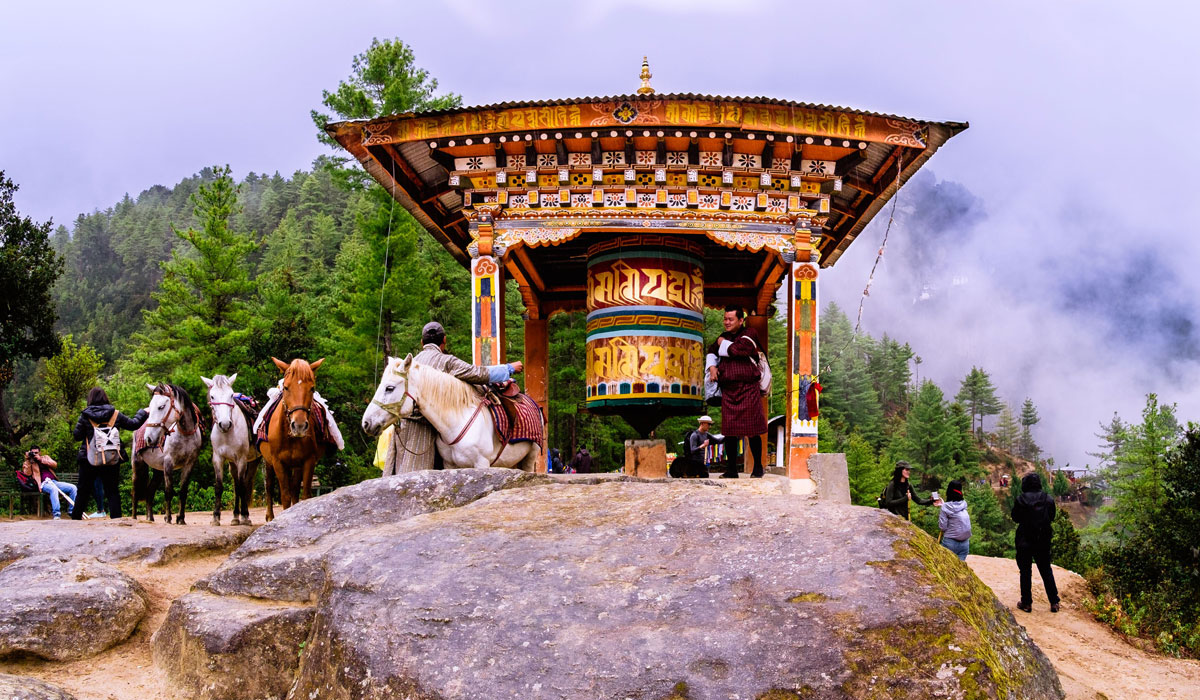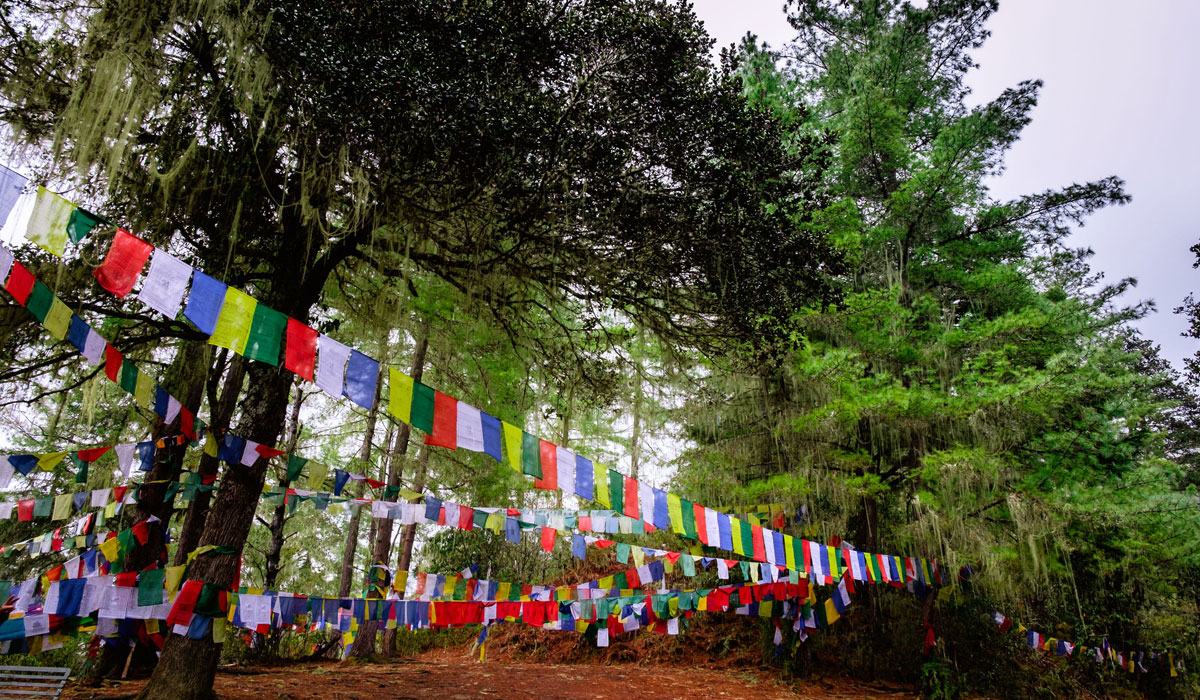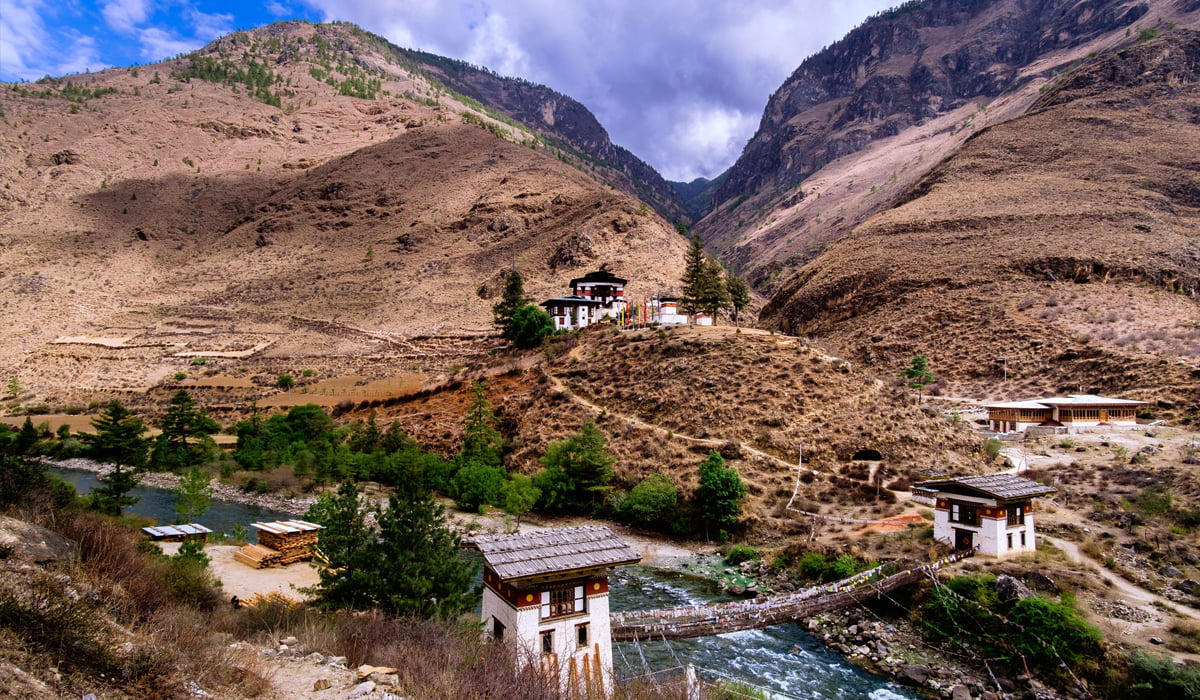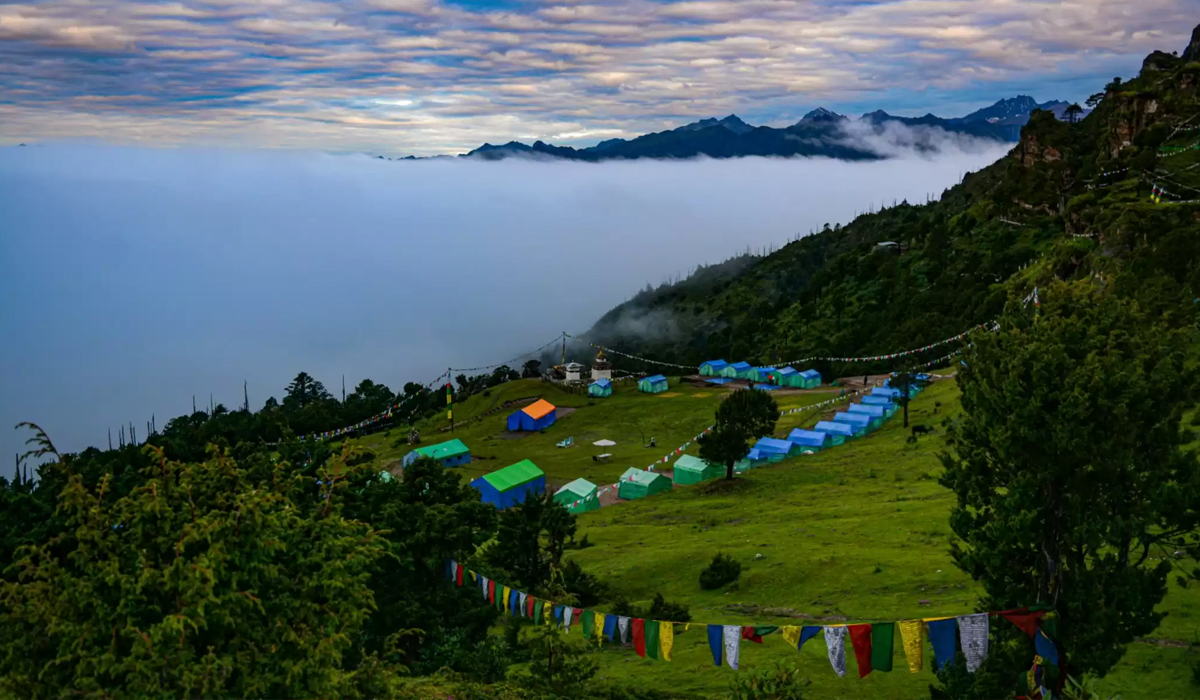


Taktsang Monastery: The Tiger’s Nest
Taktsang Monastery, commonly known as Tiger’s Nest, is one of Bhutan’s most iconic and revered landmarks. Perched precariously on the cliffs of the Paro Valley at an altitude of approximately 3,120 meters (10,240 feet), this breathtaking monastery is not only a masterpiece of architecture but also a significant spiritual site for Buddhists.
Historical Background
Taktsang Monastery was founded in the 17th century, built around a cave where the famous Buddhist saint Padmasambhava (Guru Rinpoche) is said to have meditated in the 8th century. According to legend, he flew to the site on the back of a tigress, hence the name “Tiger’s Nest.” The monastery was constructed by the monk Gyaltse Tenzin Rabgye in 1692 to commemorate Guru Rinpoche’s meditation. Over the centuries, it has become a symbol of Bhutanese spirituality and resilience, attracting pilgrims and tourists from around the world.
Architectural Highlights
The architecture of Taktsang Monastery is a stunning example of traditional Bhutanese design, seamlessly blending with the surrounding cliffs. The complex comprises four main temples, numerous shrines, and several other structures connected by a series of staircases and paths.
Visitors can explore intricately painted walls, statues, and murals depicting various Buddhist figures and teachings. The design reflects the ingenuity of Bhutanese architecture, harmonizing with the natural landscape while demonstrating the spiritual devotion of its builders.
Spiritual Significance
Taktsang Monastery is considered one of the holiest sites in Bhutan and serves as a pilgrimage destination for many Buddhists. It is believed that visiting the monastery brings spiritual blessings and a deep sense of peace. The site is also a center for meditation and prayer, where monks and devotees practice their faith.
Scenic Beauty
The monastery’s breathtaking location offers stunning views of the Paro Valley and the surrounding mountains. The hike to Taktsang Monastery is equally captivating, winding through lush forests of pine, rhododendrons, and oak trees. The scenery changes with the seasons, making each visit a unique experience, especially during spring when the rhododendrons are in bloom.
Accessibility
Reaching Taktsang Monastery involves a moderately challenging trek that begins at the base of the mountain. The journey is about 6 kilometers (3.7 miles) one way, taking approximately 2 to 3 hours to ascend, depending on fitness levels. There are well-maintained paths, and horse rides are available for those who prefer not to hike.
Festivals and Rituals
Taktsang Monastery hosts various religious ceremonies and festivals throughout the year, attracting both locals and tourists. One of the most significant events is the annual Tsechu, which features traditional dances, prayers, and offerings. These celebrations provide a vibrant glimpse into Bhutanese culture and spirituality, creating a lively atmosphere at the monastery.
Preservation and Community Roles
Efforts to preserve and protect Taktsang Monastery are ongoing, with the government and local communities working together to maintain the site’s structural integrity and spiritual significance. The monastery plays a vital role in the local community, not only as a place of worship but also as a source of cultural pride and heritage.
Paro - Places to visit

Paro Rinpung Dzong, a stunning fortress-monastery, features exquisite Bhutanese architecture and serves as an administrative center and religious site.

Kyichu Lhakhang, one of Bhutan’s oldest temples, symbolizes Buddhism’s introduction, featuring beautiful architecture and serene surroundings in Paro Valley.

Drukgyal Dzong, a historic fortress in Paro, symbolizes Bhutanese resilience, offering breathtaking mountain views and insights into the nation’s heritage.

Tachogang Lhakhang, located in Paro, is a historic temple known for its stunning architecture and beautiful bridge, symbolizing Bhutanese heritage.

Dungtse Lhakhang, a unique chorten-style temple in Paro, features exquisite murals and offers insights into Bhutanese Buddhism and history.

Taktsang Monastery, or Tiger’s Nest, clings to a cliff in Paro, symbolizing Bhutan’s spirituality and breathtaking natural beauty.

Chelela Pass, the highest road pass in Bhutan, offers stunning views, vibrant flowers, and a scenic route to Paro and Haa.

Chelela Ridge Trek offers breathtaking views of the Himalayas, vibrant flora, and a rich cultural experience in Bhutan’s scenic landscapes.

Bumdrak Trek offers stunning views of the Himalayas, serene monasteries, and unique cultural experiences, making it a memorable adventure in Bhutan.

Dzongdrakha Monastery, perched on a cliff in Paro, features stunning architecture and serene surroundings, offering insights into Bhutanese Buddhism.

Paro Taa Dzong, a historic fortress, houses the National Museum of Bhutan, showcasing the country’s rich cultural heritage and art.
